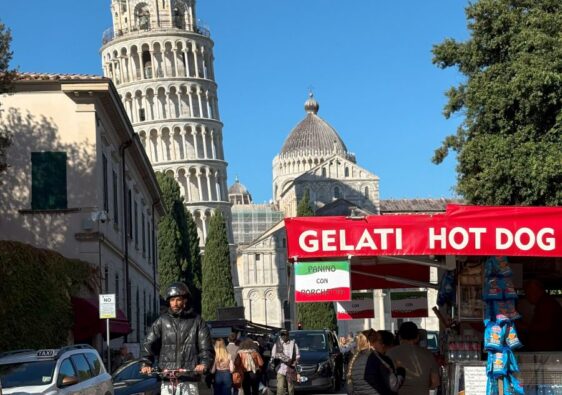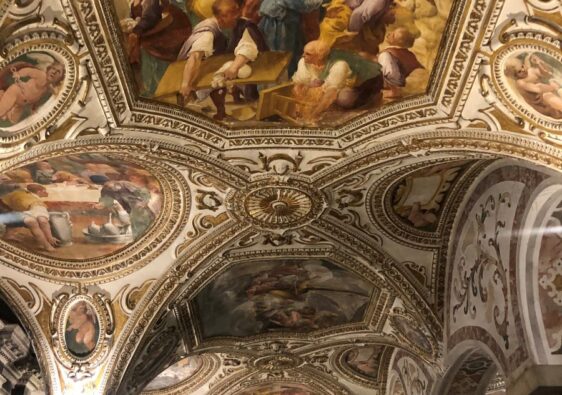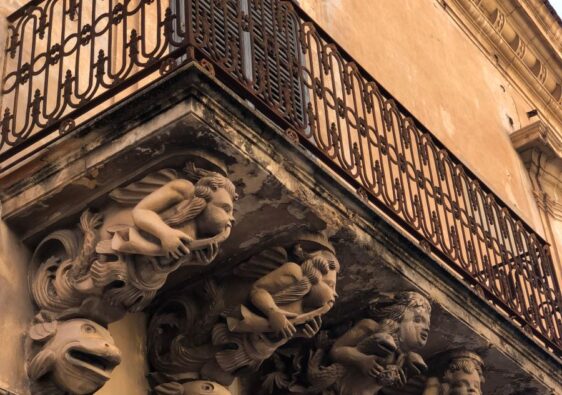Marsala is known for three things and those are salt, ancient history and wine! One thing I have always wanted to do is a wine tour and what better place could there be for my very first one? Enjoy the best taste of Marsala wine at Florio Cantine that is both an historical ride and a delicious experience.
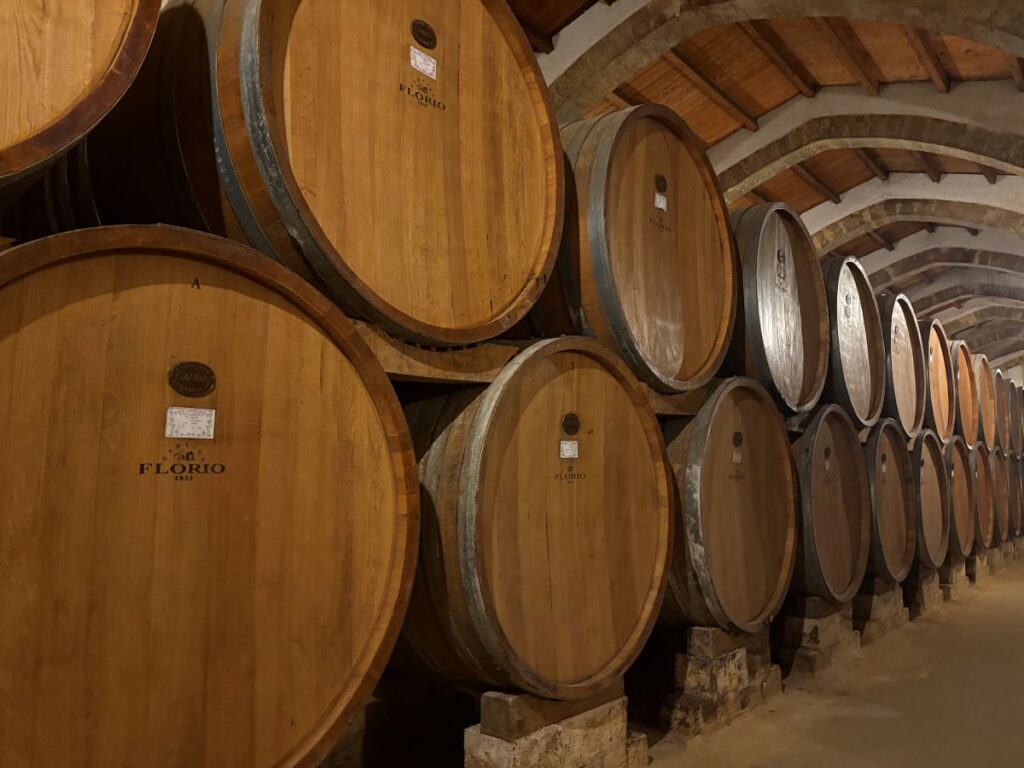
Getting There
I am currently residing in the oldest part of the city and for me, to reach the winery on foot takes 25 minutes. Located facing the sea, right on the coastal road called Via Vincenzo Florio, is where you want to be.
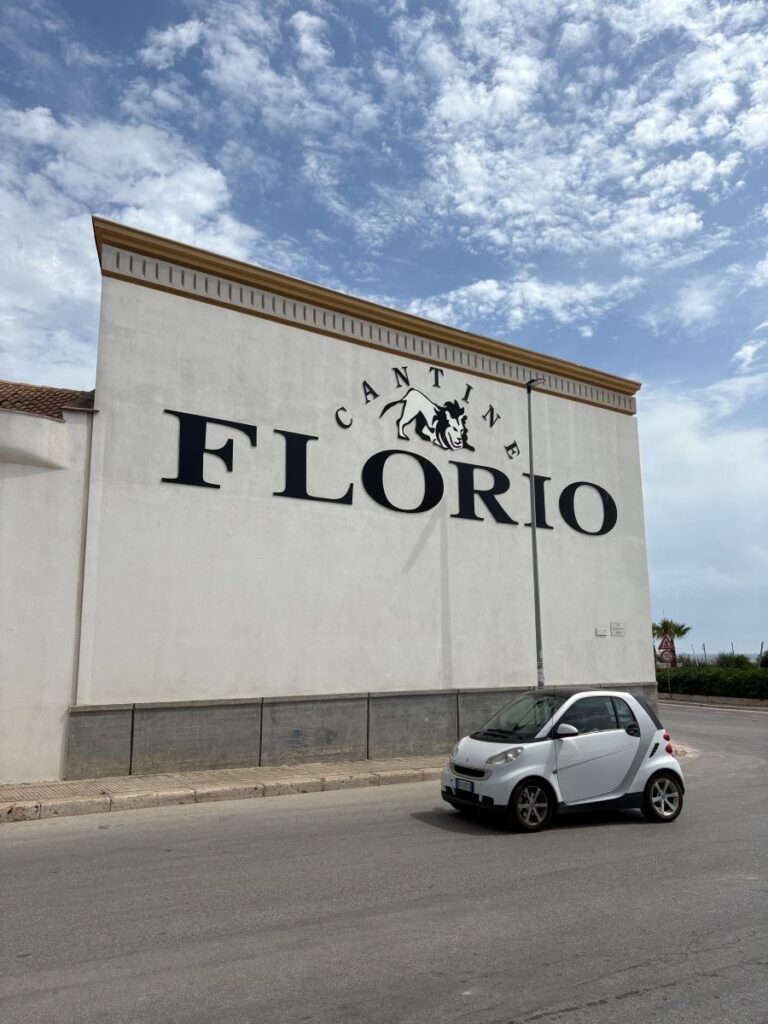
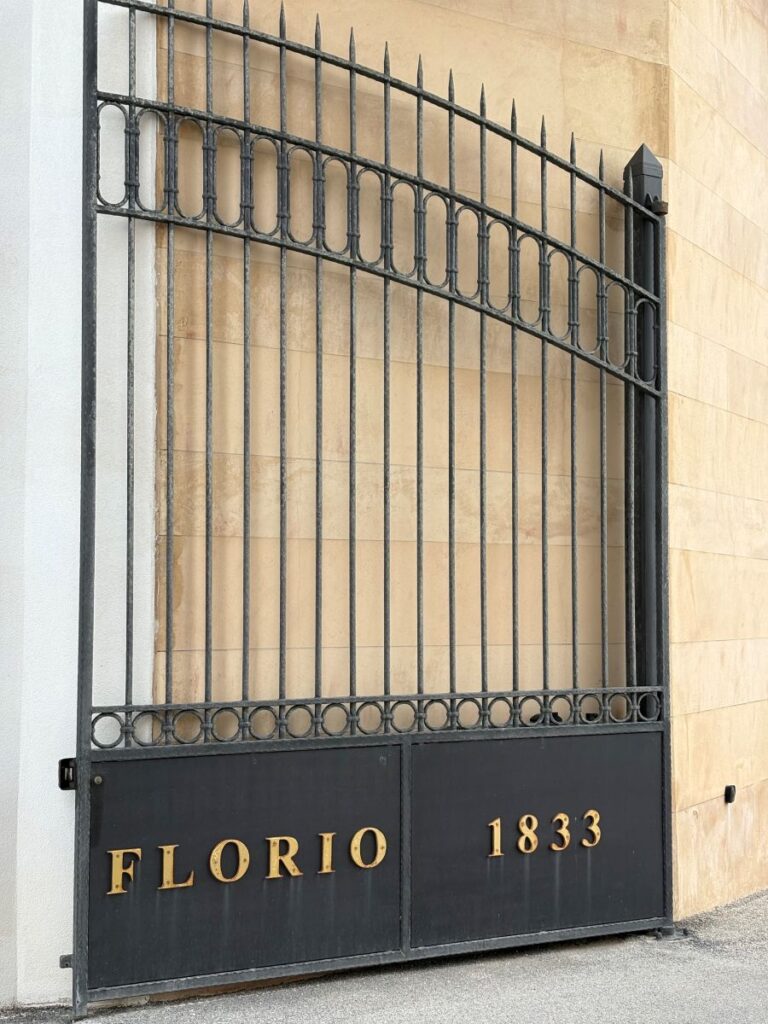
Brief History
In 1773 an Englishman by the name of John Woodhouse landed on these shores and tasted a wine that he instantly fell in love with. He made it his mission as a merchant, to load up his ship and transport as much as he could back to England.
The wine from this region became so popular, that others soon caught on and began to create wineries close to the sea, for the sole purpose of shipping the produce out. The first Italian to do this arrived in 1833 from Calabria. His name was Vincenzo Florio.
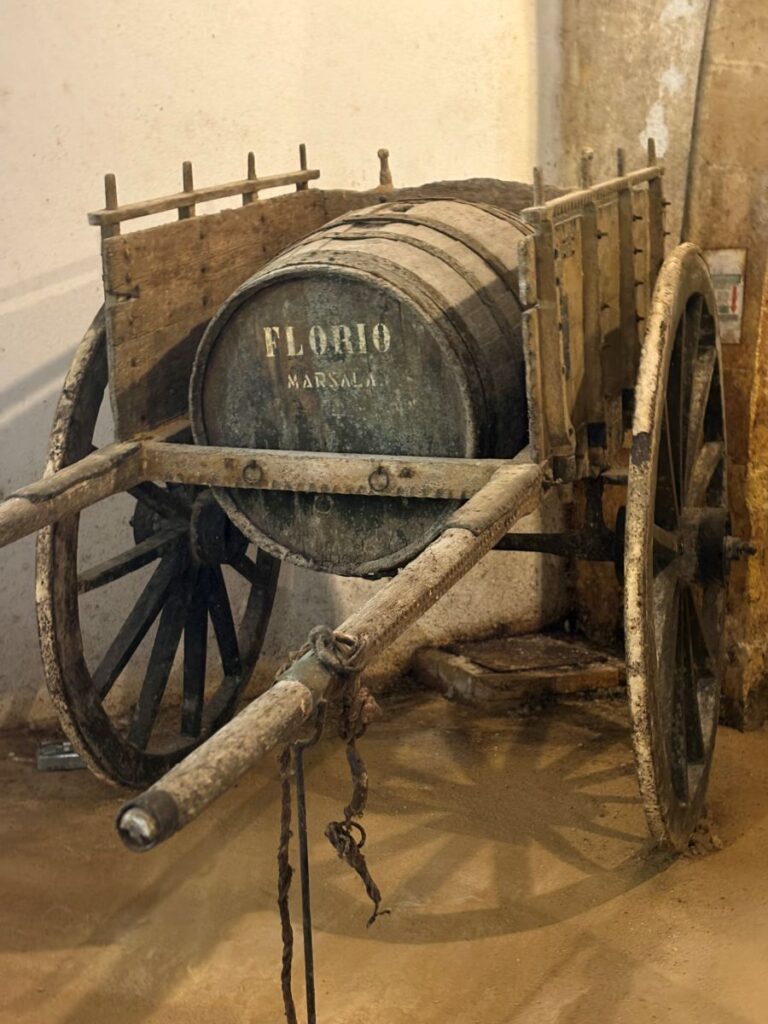


The next three generations of Florio’s built the company and expanded it to vast proportions. This included owning at one point, 999 merchant vessels to ship their product not only to England but to Italy as well. The only reason it was not 1,000 vessels was because the navy was the only group who could legally have that many ships.
The Florio family continually reinvested their profits into the company and became the largest shipping company in the country. They were the inventor’s of preserving tinned tuna in olive oil and had a massive fishery nearby.The Florio’s also organized the first Italian car race called the Targa Florio and had a large sulphur production.

However, by the end of WWI, their fortunes were almost completely lost and depleted. All of their land was sold, businesses sold, just for the winery to stay afloat. Its this winery or Cantine that we visit today.
Entrance
I enter the Cantine through the grand main entrance and am directed to sit in a large and almost empty waiting room. I have booked a wine tasting that cost €35. Normally this is far beyond my budget, but I feel with this tour I am going to learn history almost in a museum like setting, gain knowledge of wine and taste beautiful things.
At the appointed hour, the English-speaking guide enters and takes our payment. The group is supposed to be limited to 10 however I see we have 14 people present. When all have paid, we are guided to the cellars to begin the tour.
Cellars
There are four main cellars located on the 2-hectare property beside the sea. Each one has a porous tuff stone floor and an environment that changes with the seasons. From scorching hot and humid summers, to sandy winds from Africa and rainy winters. All of these factors combine to affect the wine stored here.


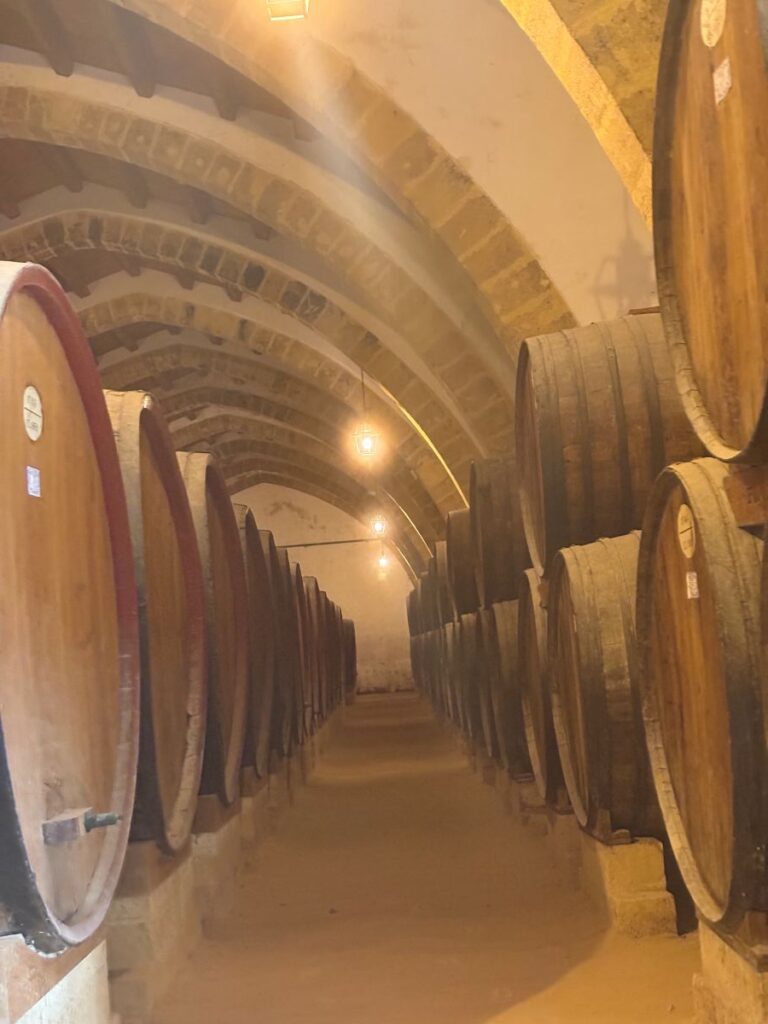
In total there are more than 3,000 oak barrels of wine. These barrels range in size, the largest of which contains 62,000 litres of wine each! One of these was shipped over to San Francisco and back for the 1915 Exposition.

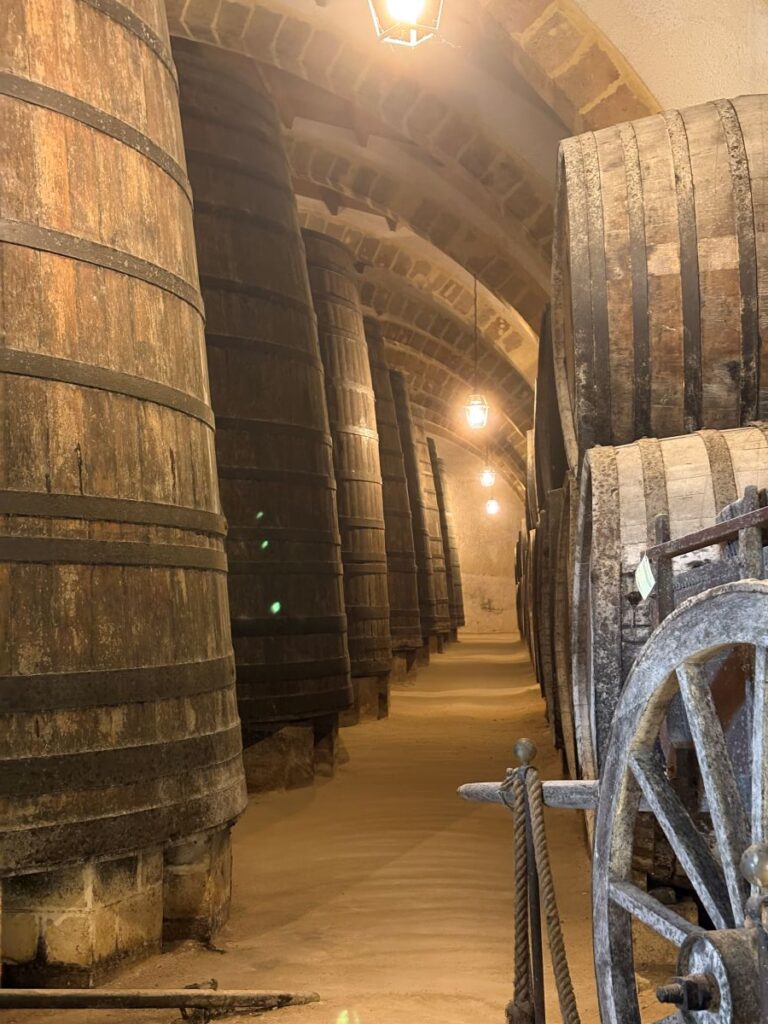
Some of these barrel’s date from the 18th century, but the oldest wine stored here is from 1939. There is a small pyramid of precious barrels with the most aged wine and these all date from WWII. You see, it was at that time, that the region suffered heaving bombing and most of the wine was destroyed.
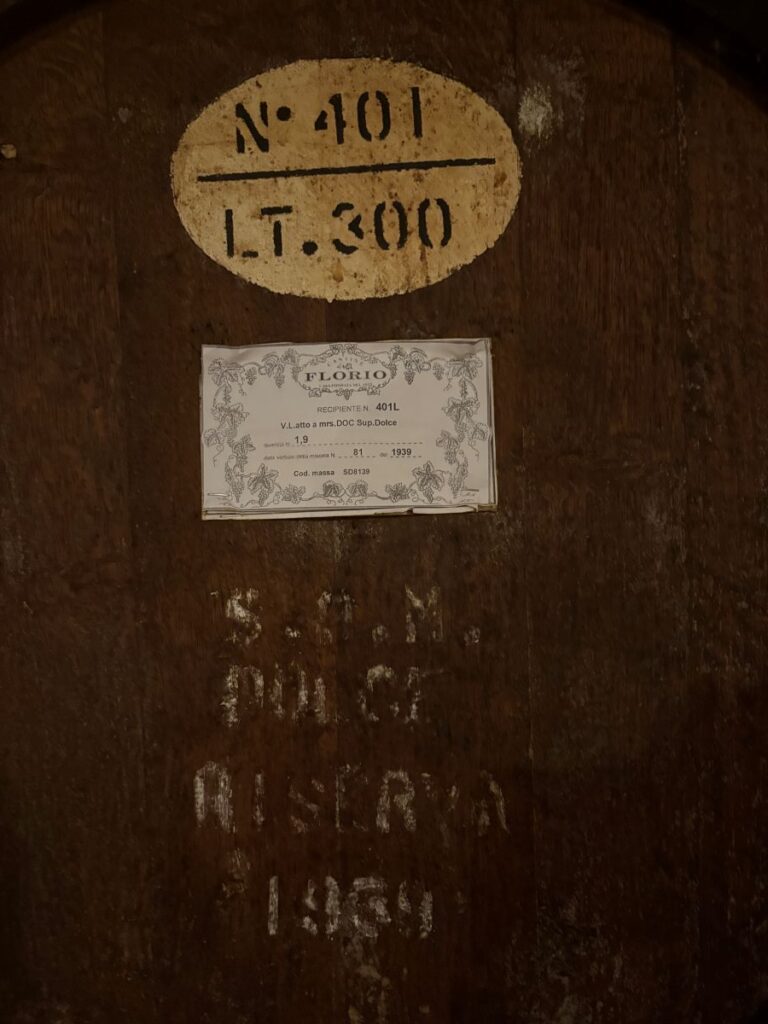
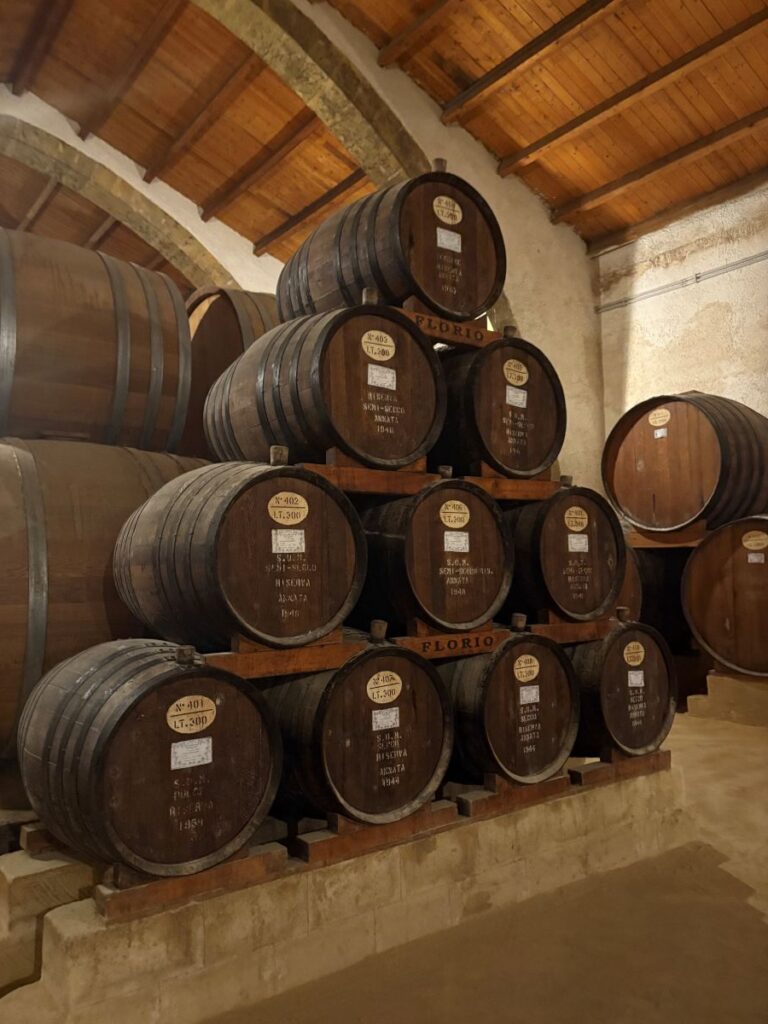

As I walk down the damp isles and inhale the musty air, I feel such a sense of history. The architecture is heavy and all encompassing. The barrels weeping their ruby elixir and the corks dusty with a rich patina. I touch the face of these old wooden barrels and marvel at their stamina.
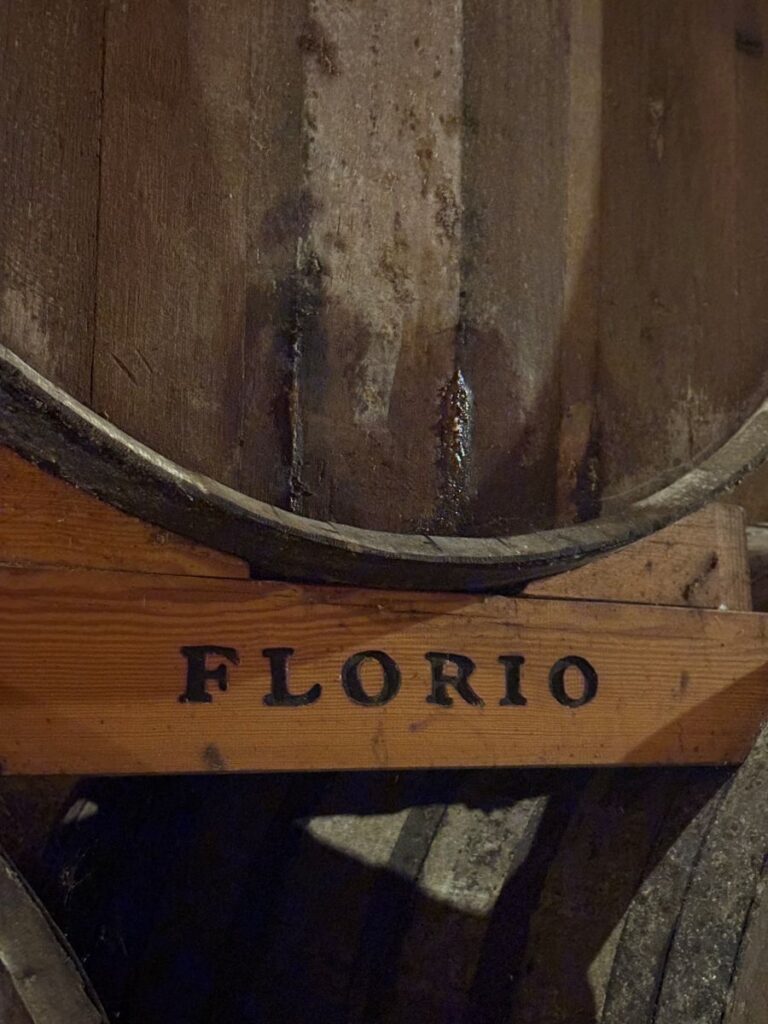
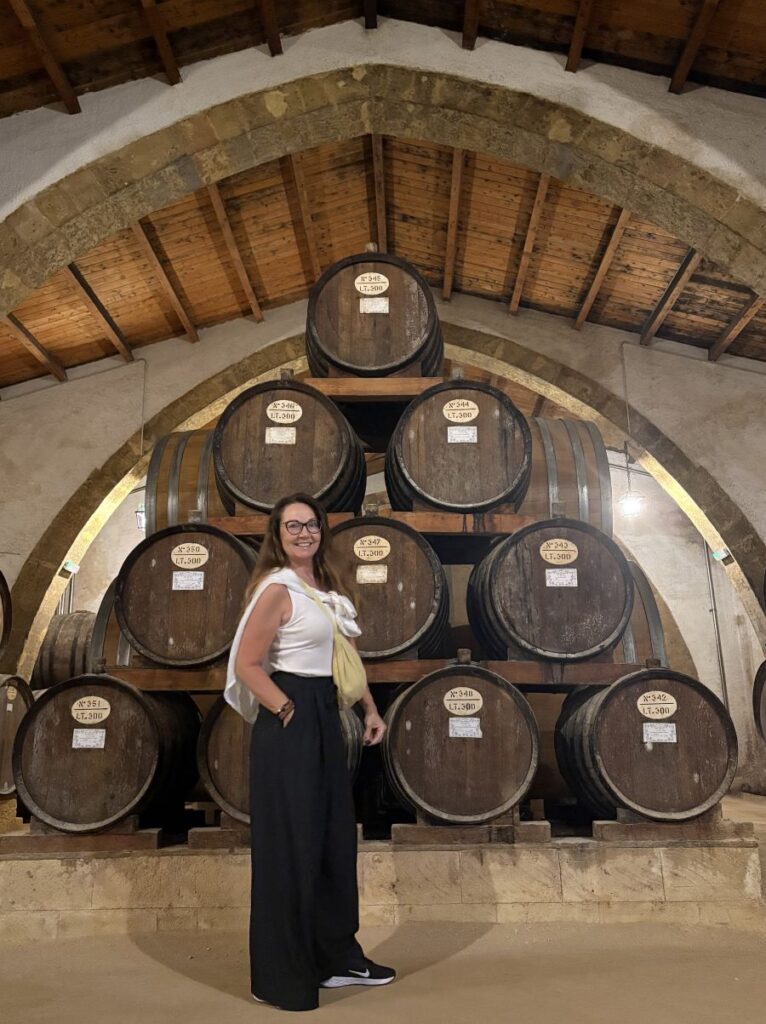
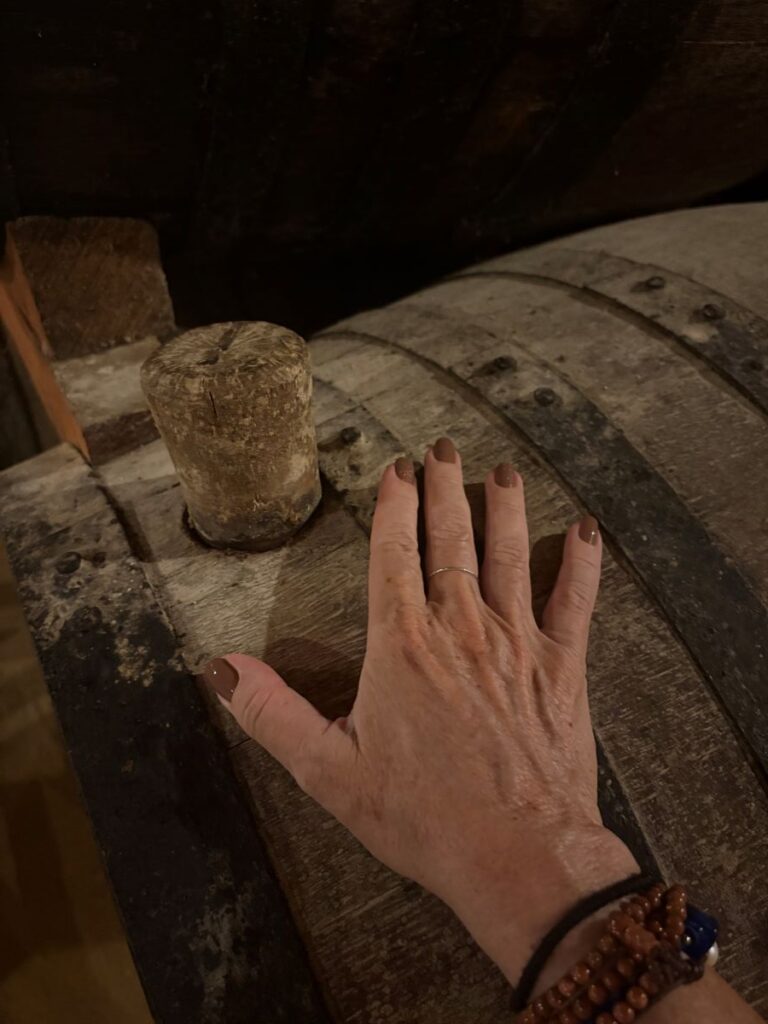
Within these four cellars is six million litres of Marsala wine.
What is Marsala Wine?
When John Woodhouse and his son first began shipping this wine back to England, they added alcohol to it, to stop the fermentation process for the long voyage home. And this is basically what Marsala is, a fortified wine.
The grapes from the surrounding vineyards are purchased and brought into the winery. Here, using a method of extreme extraction, the must is removed from the grape. Vino Florio as its now called, is fermented and used to create the entire line of wines.
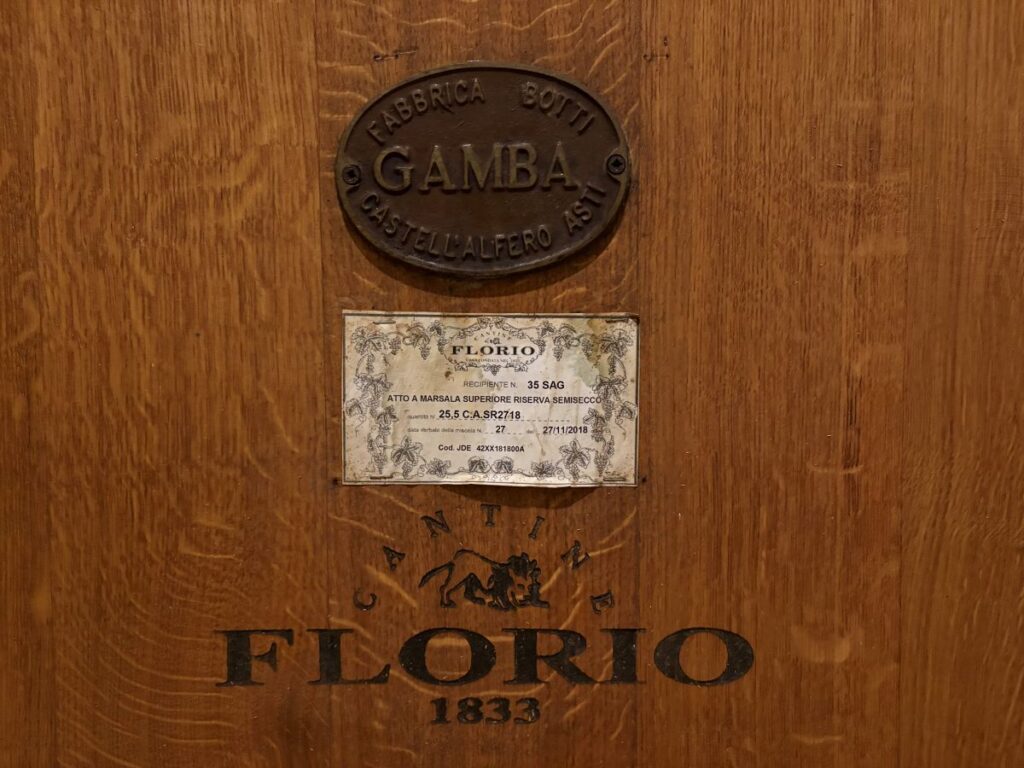
When the fermentation process is complete, the next step is called ‘Falling in Love’. This is when the alcohol is added and the wine can now be officially known as Marsala. Placed into the barrels to age, now the tweaking can begin to take place.
Different wines age for different lengths of time, the shortest of which is 2 years and the longest is 10. Sometimes must will be added to a barrel, other times, the wine is mixed between barrels. All of this information, every detail, is recorded and is shown to the consumer on the label of each bottle.
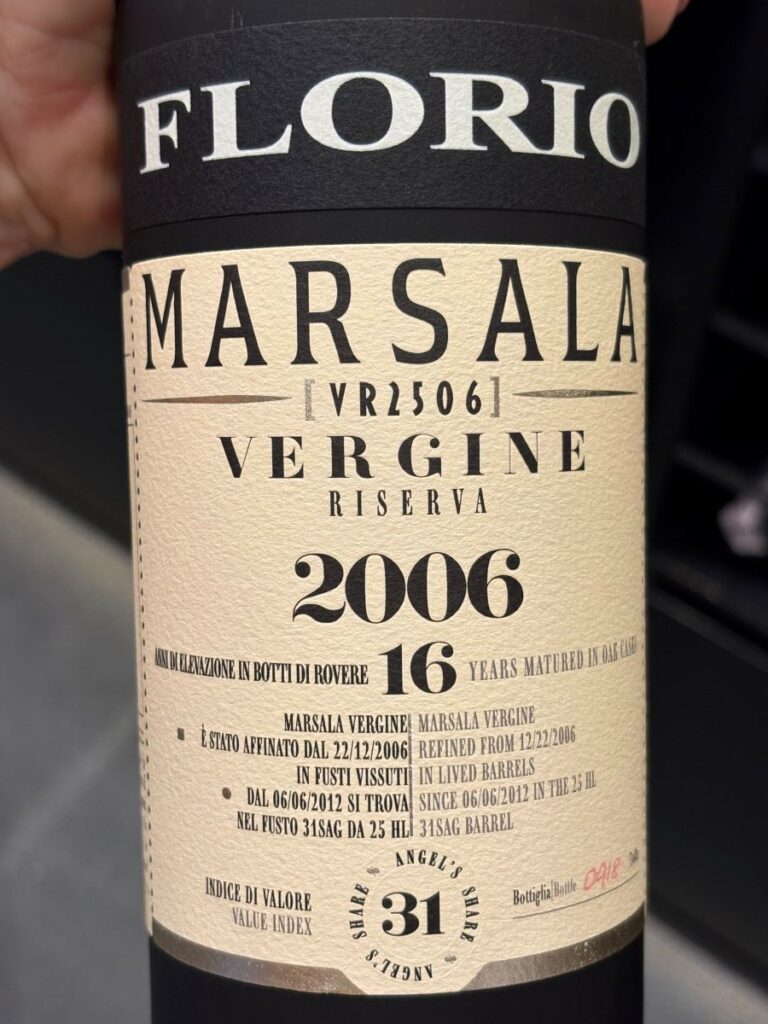

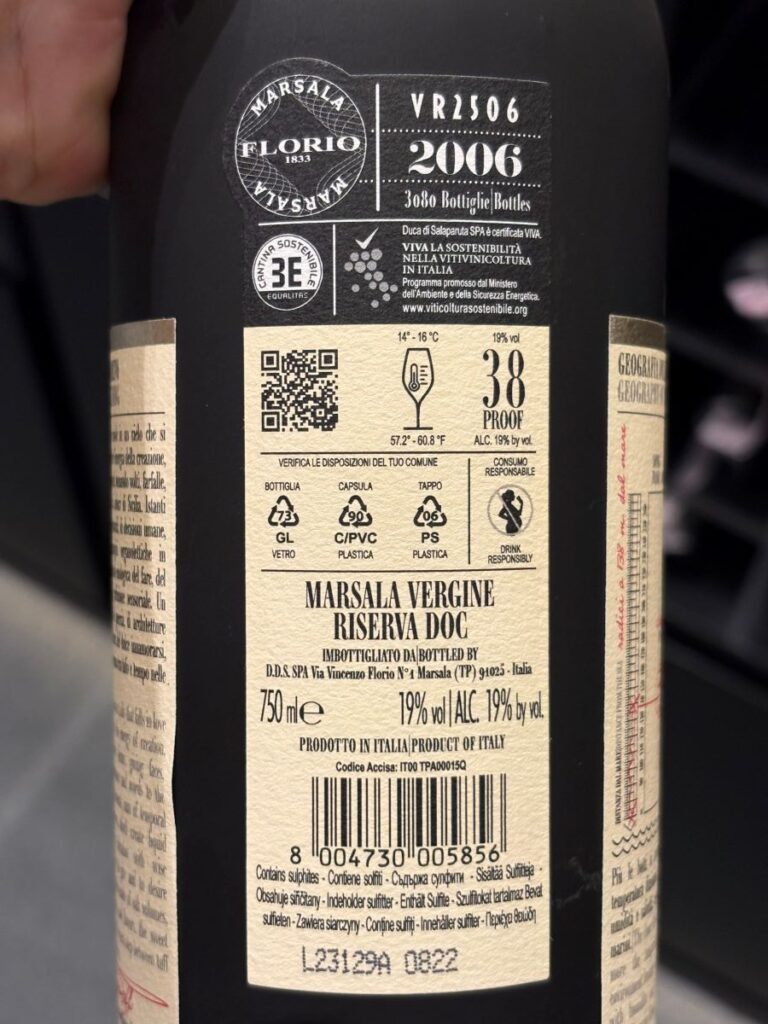
Tasting
After the tour of the cellars and learning the history of Florio and details of the wines themselves, we are guided back outside. Across the courtyard we go and into a small room. Here a long table is laid out with three glasses of wine at each chair, and three small dishes with a single food.
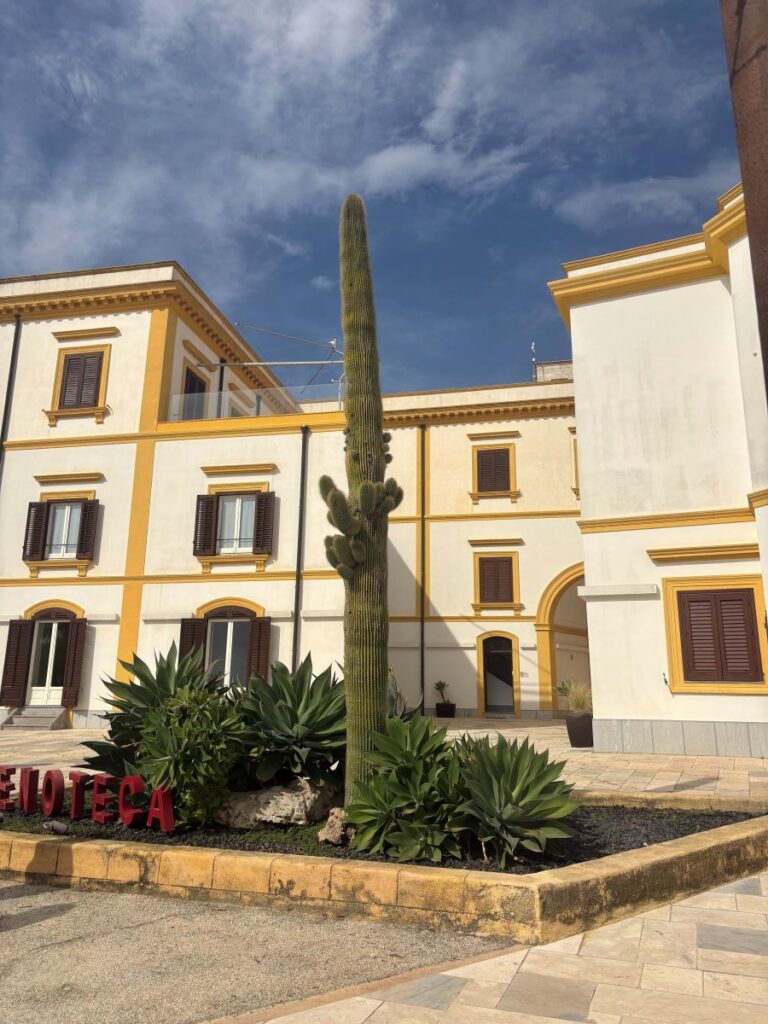

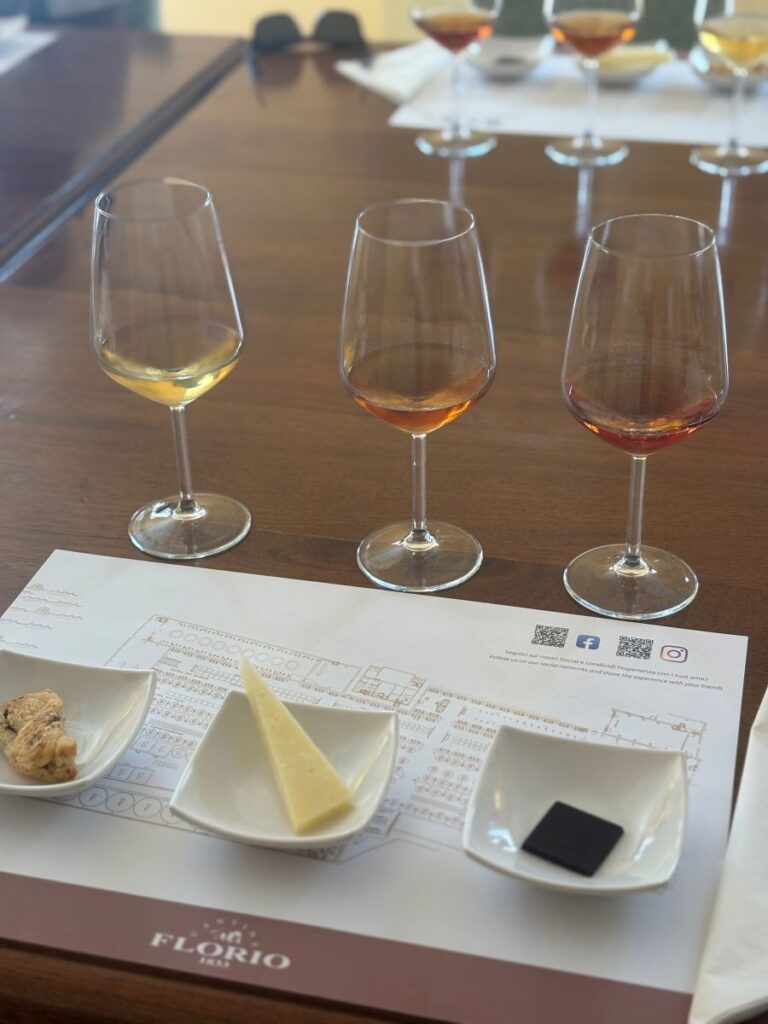
We begin with the white wine called Florio Vino Bianca (€19 per bottle) on the left, and work our way to the right. All three wines are on the dry side and I must say all are delicious. The white is paired with a savoury puff pastry sprinkled with capers. It is my least favourite and I find it quite sharp. I would prefer it much colder than it is presented to us.
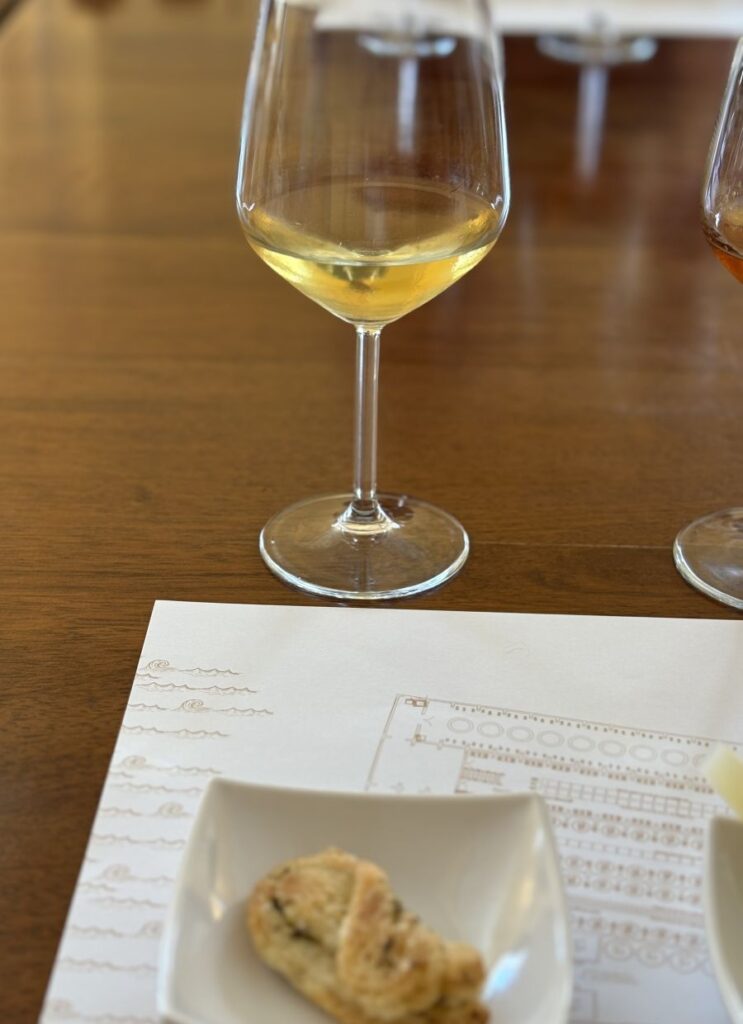
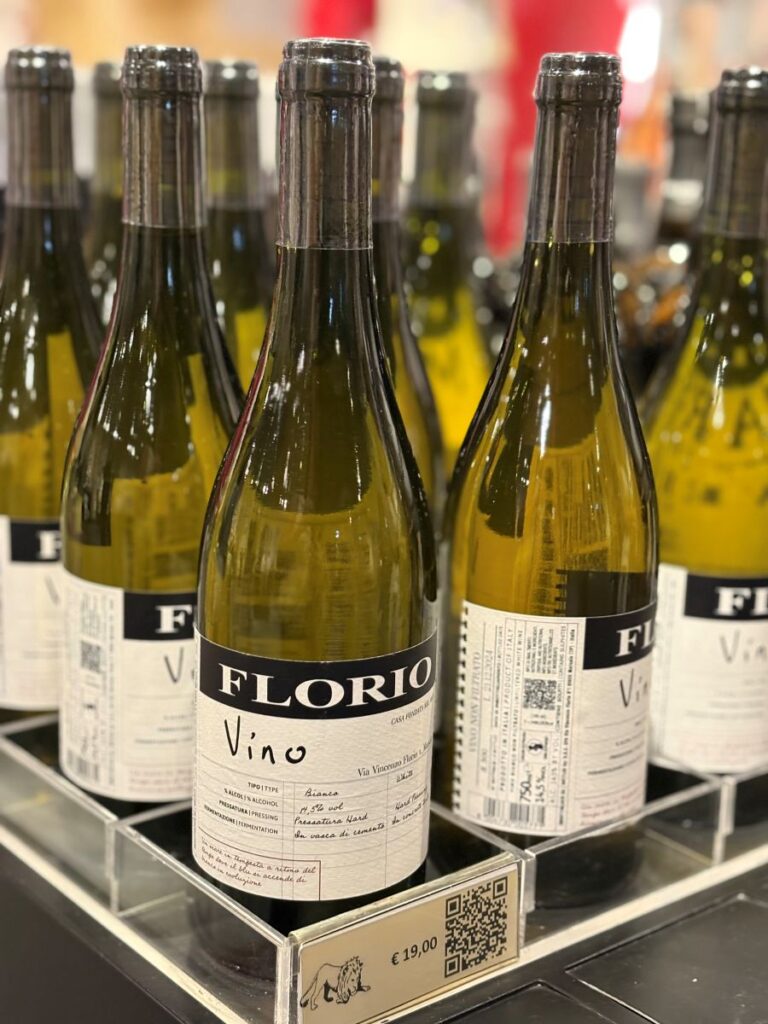
The middle glass called Marsala Vergine from Linea Premium (€75 per bottle) and has such a beautiful colour of apricots. The taste is of honey and history. It is paired with a wedge of pecorino cheese and together these are divine.
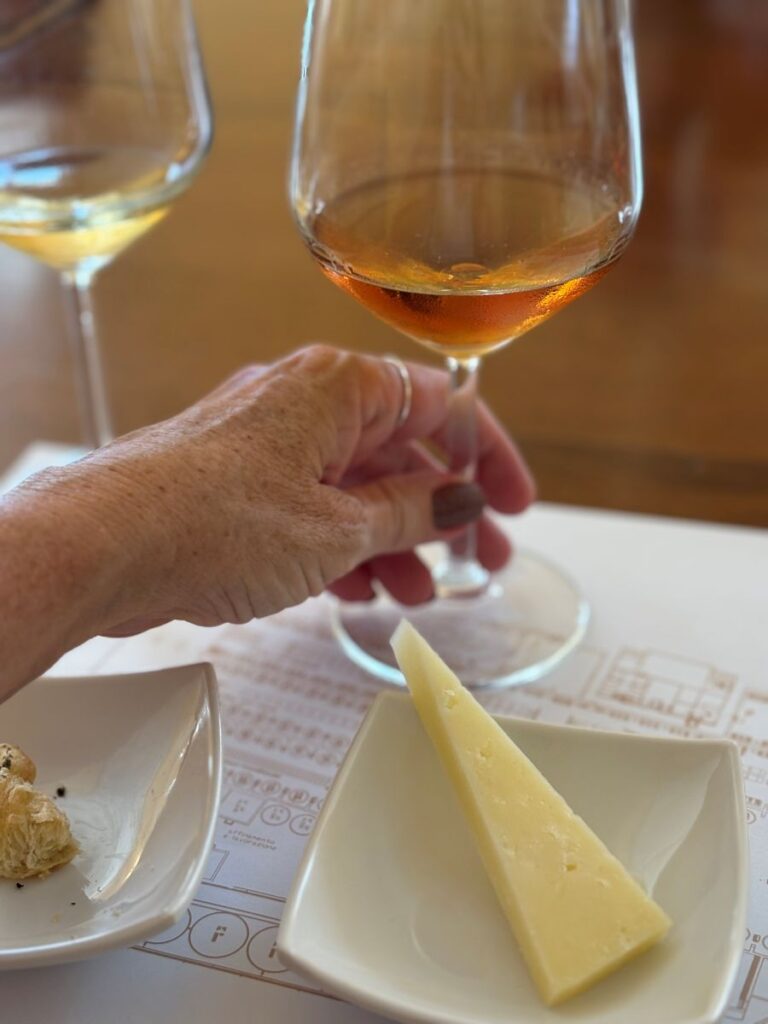

Last to taste is also from Linea Premium and called Marsala Semisecco 2009 (€54 per bottle). This one is a crimson colour, the hue of a beautiful brandy. Paired with a square of dark chocolate this makes a perfect dessert.
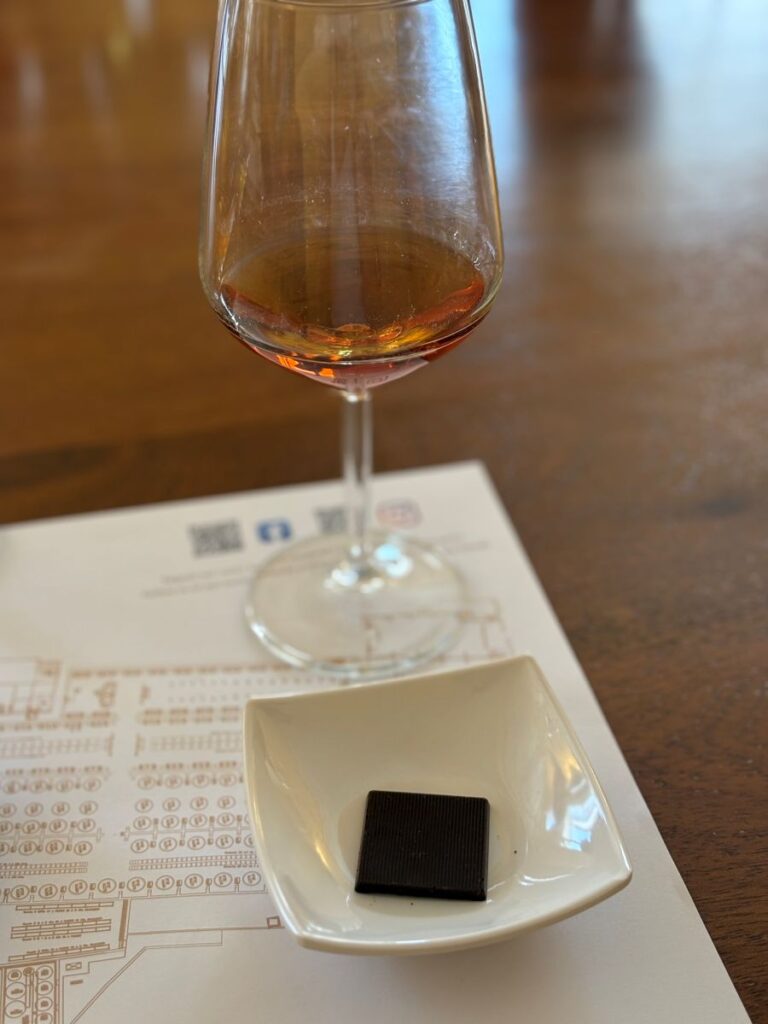
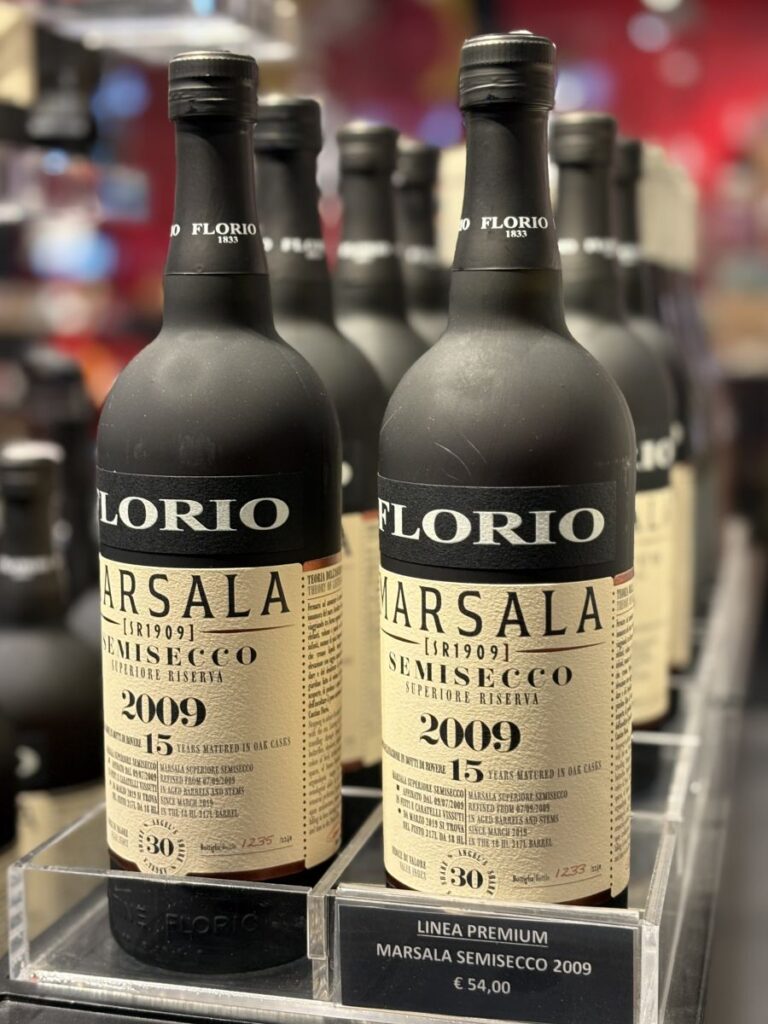
Gift Shop
The last place we are taken after our tasting is to the gift shop. I always love a gift shop so am happy to have a look around. Besides the wines that are all artfully displayed, I am enamoured with the old posters, the historical Florio advertising.

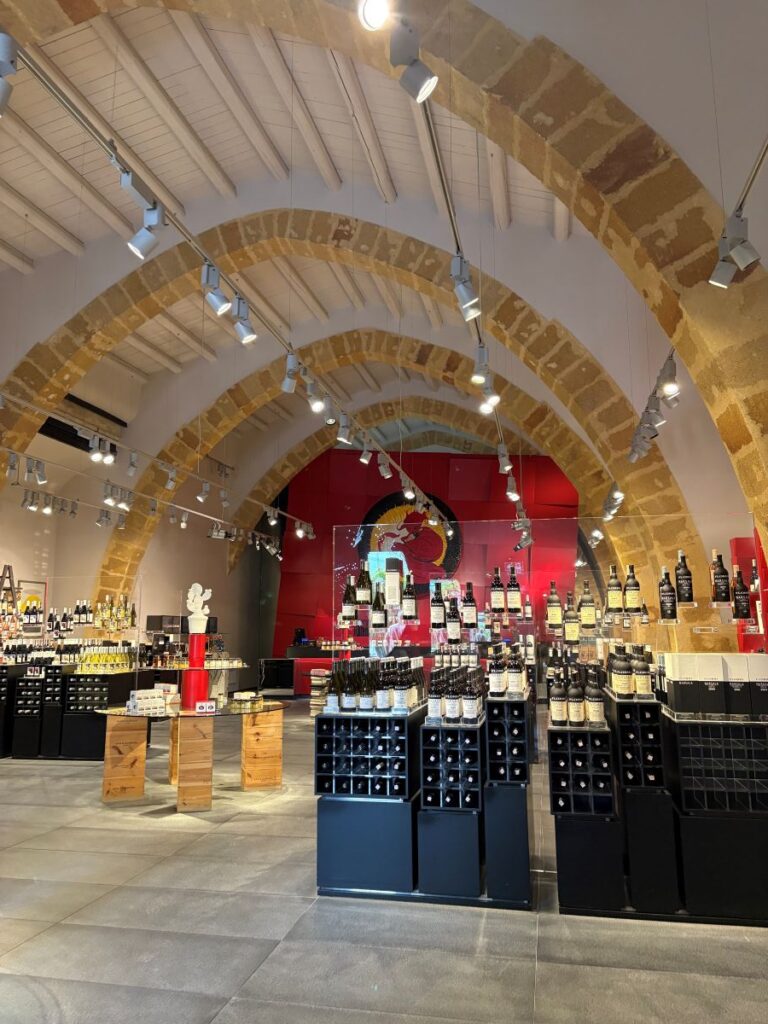

Then I see the tuna and wish I had enough funds to splurge and purchase a can. I would love to taste that, alas, it will have to wait for another time, perhaps when I have won the lottery. A note on price. The tuna at the gift shop is €12 per can. At the airport….€22 per can. 🤯 If you want to try it, purchase it on site.
Lion Logo
Have you noticed that the Florio logo is that of a lion kneeling down to drink from a stream? The history behind that is interesting. Before the Florio’s moved to Sicily and began their wine production, they were merchants. Their largest item they traded was quinine that they sold for the treatment of malaria.
The lion represents the strength of their quinine, that he is able to bend down in an environment close to water, rife with mosquitoes and remain strong and healthy!
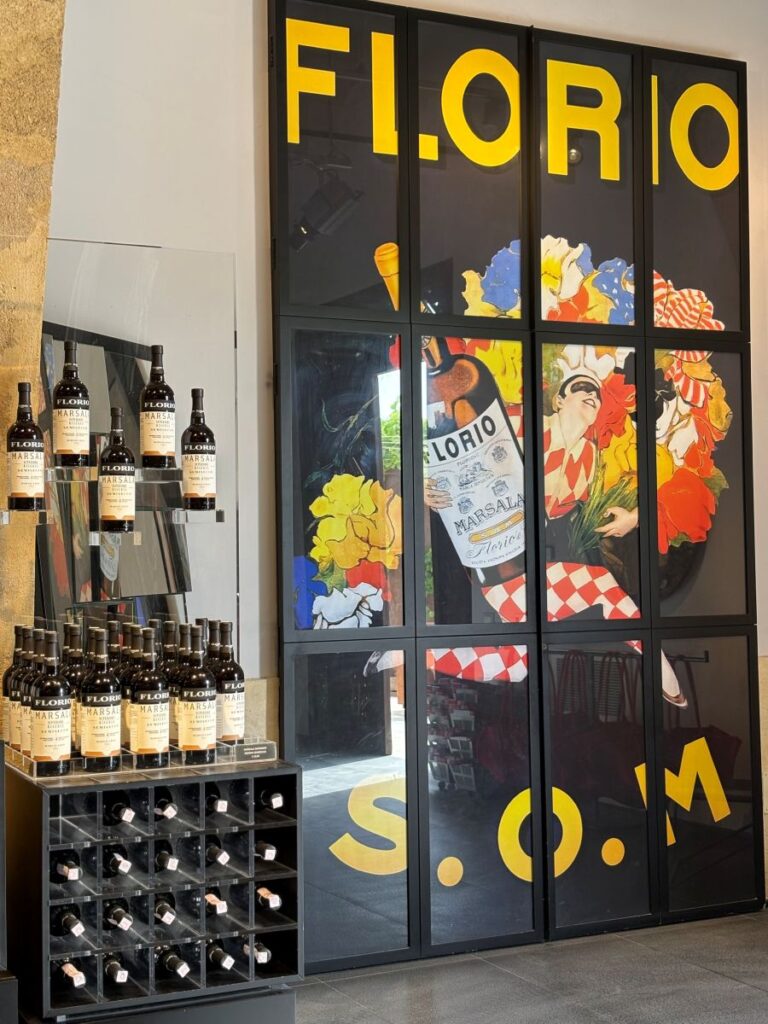
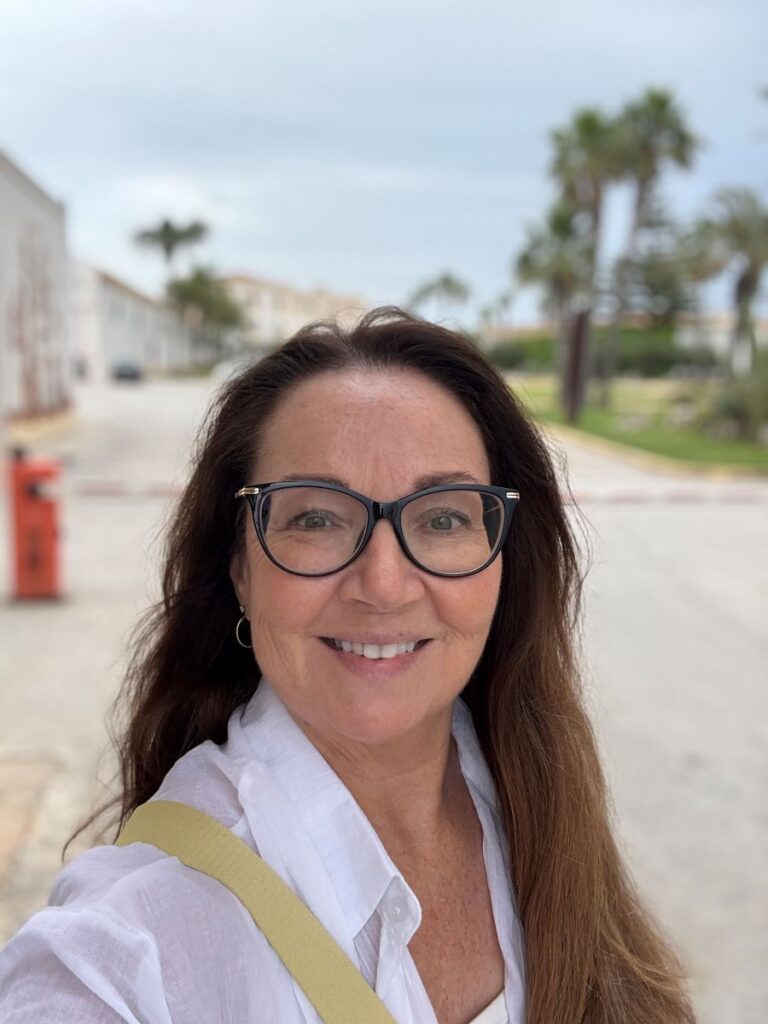
What a day! This is my first ever wine tasting and most definitely won’t be the last. I could have chosen to visit any number of wineries here in Marsala for this experience. But my intuition led me to Florio and I am so glad it did. Not only have I gained a vast amount of knowledge, I have tasted a unique flavour, gained an appreciation for sweeter wines and have left happy as a clam and a little tipsy.
